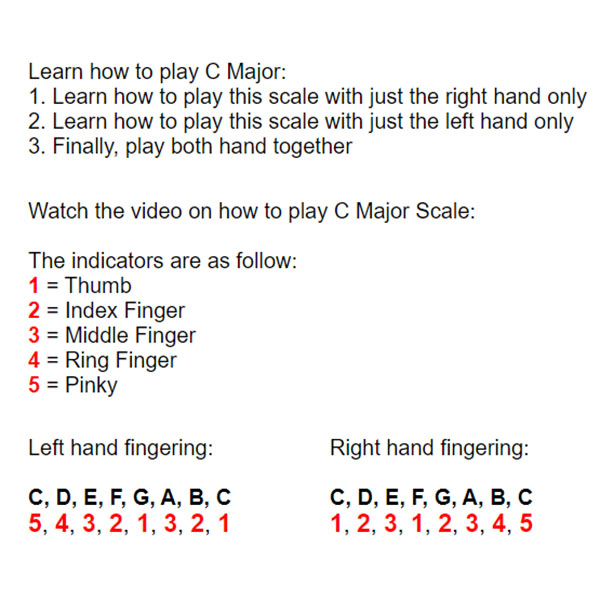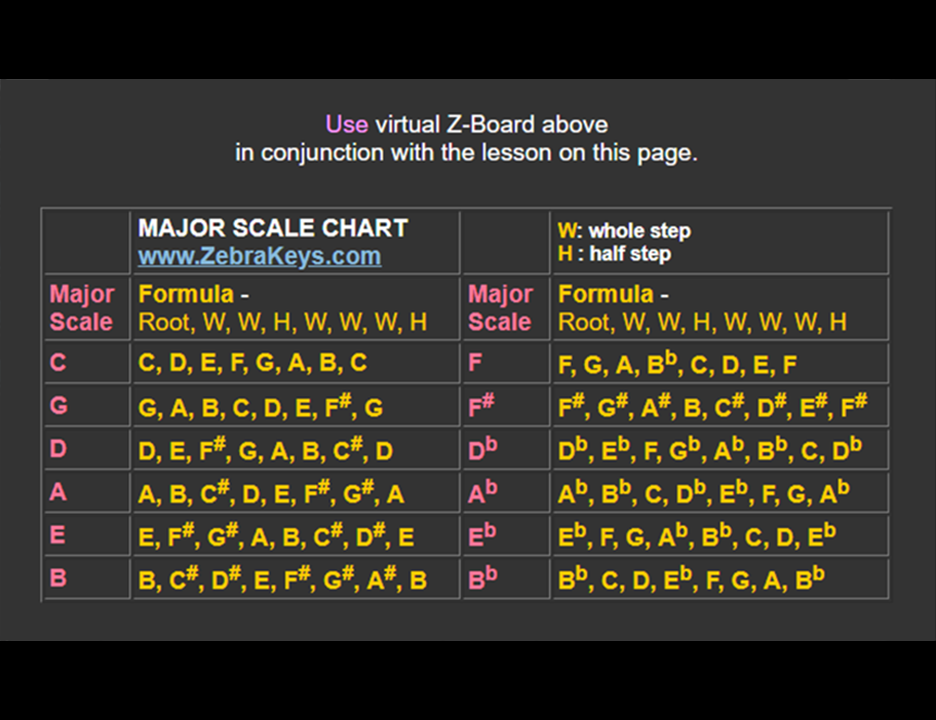Recommended
Categories
Music Theory
Lesson 14 - Intervals |
|---|
I. Index1. Introduction II. Content1. IntroductionIn this lesson you will take a look at intervals. An interval is the distance between two notes. An interval played separately is called a melodic interval; an interval played together is called a harmonic interval.2. The Half StepIn western music, the smallest interval is the half step. This is sometimes referred to as the semitone or halftone. A visual representation of the half step is any two notes on the piano keyboard that have no notes between them. Below is an illustration of some half steps on the piano keyboard. Notice that all the half steps on the piano keyboard consist of a black and white key that are next to each other. There are two exceptions. The distance between the two white notes B and C, and the two white notes E and F are also a half step.3. The Whole StepThe whole step is a distance of two half steps. This is sometimes referred to as a whole-tone. This would make a whole step any two notes with only one note between them. Below is an illustration of some whole steps on the piano keyboard.4. Description of IntervalsIntervals are described in two ways. One way to describe intervals is by number, also known as interval number. The interval number has to do with the distance two notes of a given interval are from each other on the staff. These numbers are U (unison), 2nd, 3rd, 4th, 5th, 6th, 7th, and 8ve (octave).Another way to describe intervals is by quality, also known as interval quality. Here are the terms along with their abbreviations in parenthesis used to name interval quality. Perfect (P) Major (M) Minor (m) Augmented (A) Diminished (d) Unison, fourth, fifth, octave. These intervals may be perfect, augmented, or diminished.
A perfect fourth is five half steps. A perfect fifth is seven half steps. A perfect octave is twelve half steps. A perfect unison occurs between notes of the same pitch, so it is zero half steps. In each case, an augmented interval contains one more half step, and a diminished interval contains one less half step. Second, third, sixth, seventh. These intervals may be major, minor, augmented, or diminished.
5. 12 Basic IntervalsLet's take a look at the basic intervals on the piano keyboard and what they sound like. You are going to skip the unison, because a unison is two of the same notes.Below is a Minor second, abbreviated (m2). Notice the lowercase "m". The opening of the "Jaws" theme is a (m2). Below is a Major second, abbreviated (M2). Notice the uppercase "M". The first two notes of "Happy Birthday" are a (M2). Below is a Minor third, abbreviated (m3). "The Impossible Dream" has a (m3). Below is a Major third, abbreviated (M3). "Halls of Montezuma" has a (M3). Below is a Perfect fourth, abbreviated (P4). The first two notes of "Here Comes the Bride" are a (P4). Below is a Diminished 5th, abbreviated (d5). This is also known as a Tritone, abbreviated (TT). Sing "Maria" from the song "Maria" in "West Side Story". That is a (TT). Below is a Perfect fifth, abbreviated (P5). The first two notes of "Twinkle Twinkle Little Star" are a (P5). Below is a Minor sixth, abbreviated (m6). Below is a Major sixth, abbreviated (M6). The first two notes of the "NBC" theme are a (M6). Below is a Minor seventh, abbreviated (m7). "Somewhere" from "West Side Story" has a (m7). Below is a Major 7th, abbreviated (M7). "Bali Hai" from "South Pacific" has a (M7). Below is an Octave. It may sometimes be abbreviated (Oct.). The first two notes of "Somewhere Over the Rainbow" are an Octave. 6. ConclusionIn this lesson you went over intervals. You then learned about half steps and whole steps. Intervals can be named using number and quality. You also went through and named the 12 basic intervals.
Custom Search
|
Recommended Stuff
Music Theory for Beginners
|
Lesson 12 12 Keys In Music 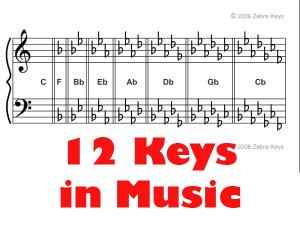 |
Lesson 13 Major Scaes 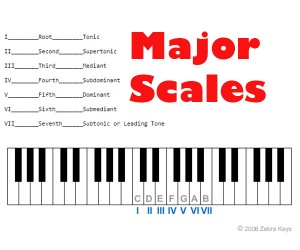 |
Lesson 14 Music Intervals 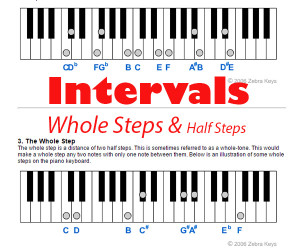 |
|
Lesson 15 Chords of Major Scale 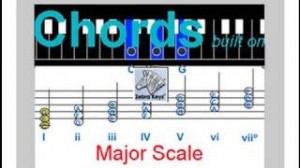 |
Lesson 16 Circle of Fifths 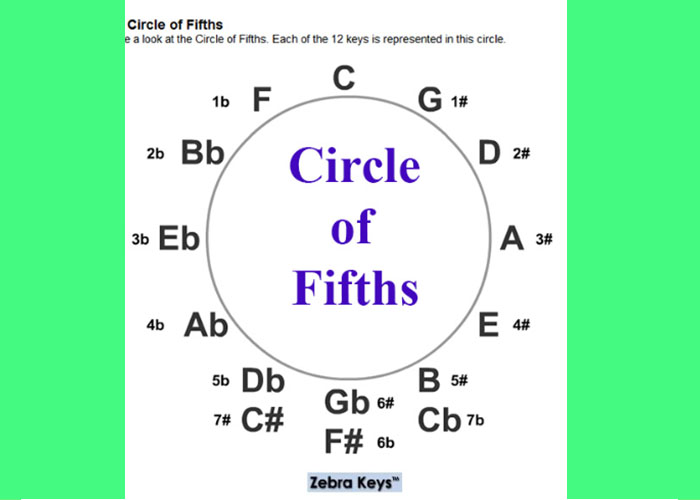 |
How To Read Music 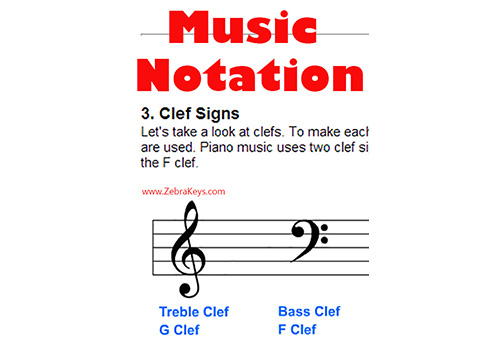
|
Learn the "Whole Steps" and "Half Steps" for beginners
Lesson 14 - Intervals
A music interval is the distance between the two notes in music. The smallest interval in Western music is a Half Step, or Half-tone (Semi-tone)Lesson 12 - 12 Keys In Music
| Learn Piano Keys Layout | | | Piano Key Names |
Lesson 13 Major Scale
Learn how Major Scale is built, and learn how to play Major Scale in the key of C in the video below:
| Formula of Major Scale is: |
| R, W, W, H, W, W, W, H |
| (R = Root Note, W = Whole Step, H = Half Step) |
| Notes in the Key of C are: |
| C, D, E, F, G, A, B, C |
|
Access our online Virtual Keyboard to try it for yourself Click below to watch how to play major scale in different keys |
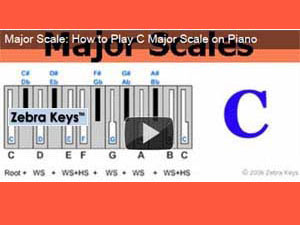 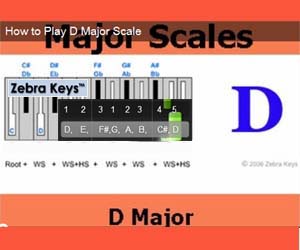 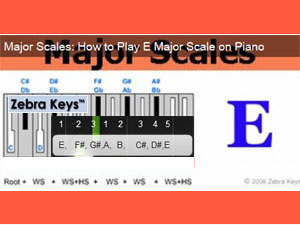 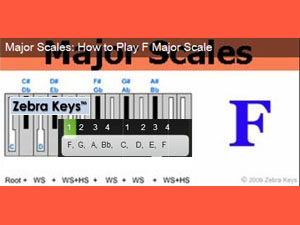 |
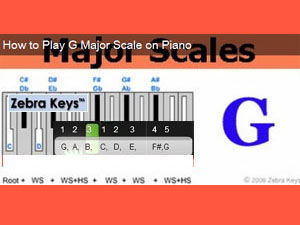  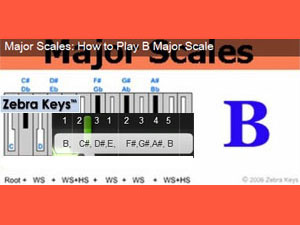 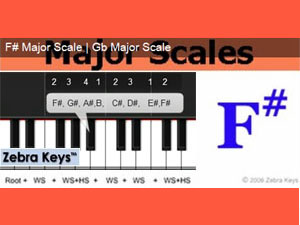 |
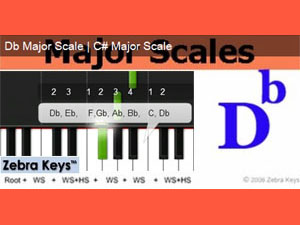 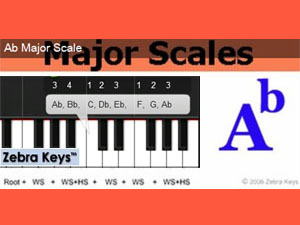 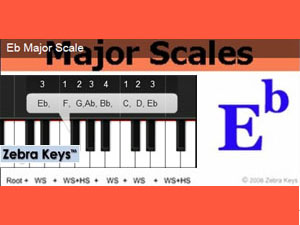  |
|
Watch Lesson 15 - Chords of the Major Scale with Flash demos in the video below: |
Lesson 15 - Chords of the Major Scale
Here you will learn about Chords that are built on any Major ScaleLesson 16 - Circle of Fifths
The circle of fifths diagram is very useful for music improvisation and it also helps to identify the three primary chords in a songMore related tutorials here
| TRANSLATE this content |
| Beginner Piano | | | Intermediate Piano | | | Advanced Piano |
|
List of 50 Free Lessons
Piano Basics  Lesson 1 - Patterns of Piano Keyboard Lesson 2 - Names of White Keys Lesson 3 - Names of Black Keys Lesson 4 - Grand Staff Lesson 5 - Note Durations |
Use our free Virtual Piano Keyboard in conjunction with these free lessons:
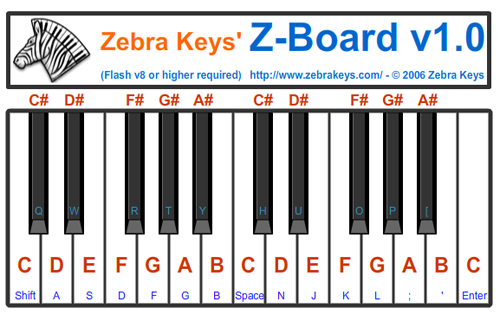 |
|
Beginner Piano Lesson 6 - Brother John Lesson 7 - London Bridge Is Falling Down Lesson 8 - Twinkle Twinkle Little Star |
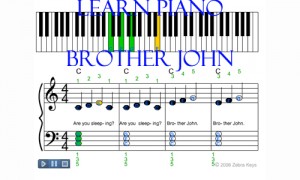 |
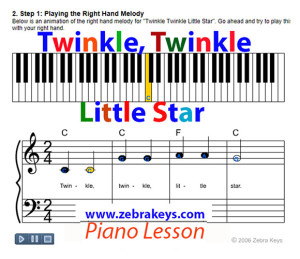 |
| Lesson 9 - Major Chord |
|
FIND any CHORDS using Free Virtual Piano Chord Chart 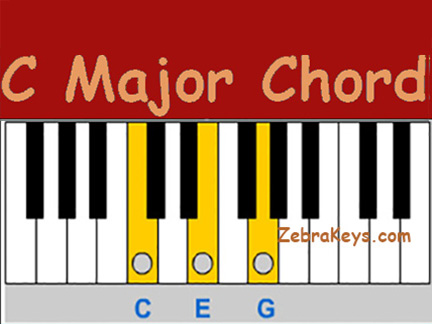 |
|
Lesson 10 - Three Primary Chords Lesson 11 - 12 Bar Blues Chord Progression |
| Lesson 12 - 12 Keys of Music |
 |
 |
|
Lesson 13 - Major Scale
Lesson 14 - Musical Intervals Lesson 15 - Chords of the Major Scale Lesson 16 - The Circle of Fifths |
 |
|
Lesson 17 - Chord Inversions Lesson 18 - Double Chord Pattern Lesson 19 - Broken Chord Pattern Lesson 20 - Arpeggio Chord Pattern Lesson 21 - Sounds of the Orient (Pentatonic Scale) Lesson 22 - Mysterious Sounds (Whole Tone Scale) Lesson 23 - Arpeggios |
|
Intermediate Piano Lesson 24 - America (My Country Tis of Thee) Lesson 25 - Silent Night Lesson 26 - God Rest Ye Merry Gentlemen |
|
Lesson 27 - Minor Chord Lesson 28 - Three Secondary Chords Lesson 29 - Dominant 7th Chord Lesson 30 - Major 7th Chord Lesson 31 - Minor 7th Chord Lesson 32 - Natural Minor Scale Lesson 33 - Chords of the Natural Minor Scale |
|
Lesson 34 - Melody as Octaves Lesson 35 - Root Chord Pattern Lesson 36 - Harmony Notes Lesson 37 - Major Chord Inversions Lesson 38 - Chord Inversion Straddles |
|
Advanced Piano Lesson 39 - The First Noel (Flash demo version) Lesson 40 - Auld Lang Syne Lesson 41 - Hark! The Herald Angels Sing |
|
Lesson 42 - Diminished Chord Lesson 43 - Augmented Chord Lesson 44 - 6th Chords Lesson 45 - Sus2 Chords Lesson 46 - Sus4 Chords Lesson 47 - Major 9th Chords Lesson 48 - Major 11th Chords Lesson 49 - Major 13th Chords Lesson 51 - Blues Scale |





